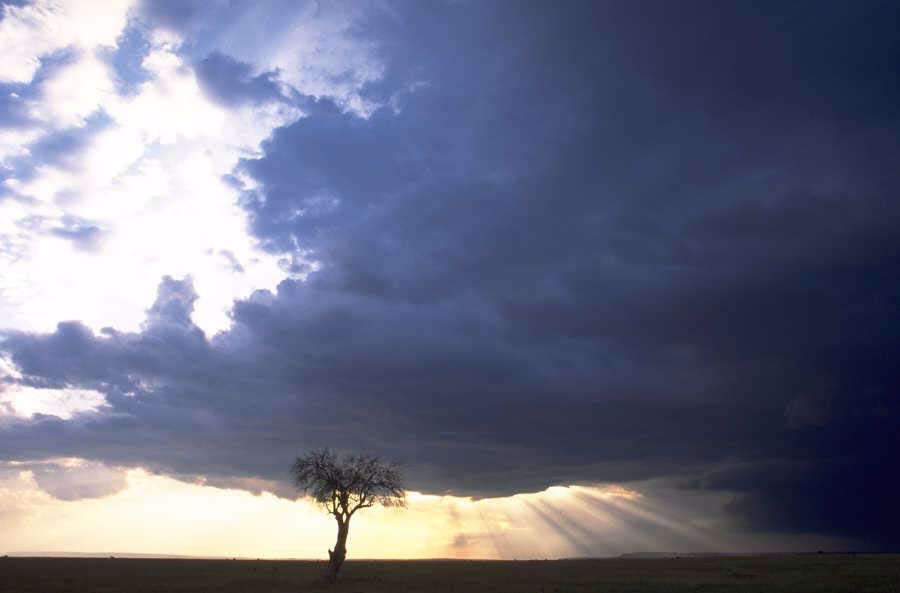|
| |
Most,
if not all . . . intense episodes of sadness are
elicited by the loss, or expected loss, either of a
loved person, or else of familiar and loved places
and social roles. A sad person knows who or what he
has lost and yearns for his (or its) return.
John Bowlby12 |
|
|
| |
|
|
|
When we finally begin to accept that all
our searching to recover what we had once enjoyed cannot succeed, we
are likely to move into a gray but flatter phase in which we may
well feel all but completely becalmed. Very different from the
turbulent peaks and troughs of earlier days, this “sea” lies beyond
the divine anaesthetic, and the most intense of our initial
outbursts of anger and disbelief. It is marked above all by a
profound, and potentially prolonged, sadness – a word that derives
from an old English word that means “weary,” for this is precisely
what grief is.
I shall be referring on several
occasions in this book to Robbie Davis-Floyd’s beautifully written
but deeply harrowing account of life in the aftermath of her
daughter's tragic death. This is how her story begins.13
| |
It has been two
and a half years since I was invited to write this article,
and I have been unable to face it until this moment – 1
a.m., as I rise from my unrestful rest to put fingers to
computer keys . . .
I have been happy all my
life, living out of a deep wellspring of joy bubbling up
within me. When Peyton died, I lost that deep bubbling
happiness – it comes back now only in fleeting moments all
the more precious for their scarcity.
I have a wonderful son, many
friends, and a fulfilling career. But I have lost the very
most precious thing in my life, and no platitudes about how
I will see her again in Heaven, or that we will be united
past this life, or she is always with me in spirit (which I
know to be true) can alleviate for more than a little while
the exquisite agony I always feel about her death. I thought
I knew the meaning of suffering before she died – I had
already experienced a good deal of pain and loss in my life
– but I had absolutely no clue what real suffering was . . .
Peyton’s death put a knife in my heart – a big fat butcher
knife that tapered down to a fine point. Not to mention the
five or so daggers sticking into my back. I was astonished.
I honestly don’t think it
would have hurt more if there had been a solidly physical
knife in my heart. I walked around for months pressing my
hand to my heart, doubled over in pain.
As in the pains of labour, there were breaks. When I laughed
with friends, when I wrote an article, when I taught class,
when I gave talks, the butcher knife would slide out till
only the tip was still sticking in. But when the laughter
ended, or I stood up from the computer, the knife would slam
right back into my heart up to the hilt, and I would gasp
and double over again. |
|
Many of us will identify with these
feelings. Grief is so profoundly wearying that the journey requires
immense physical energy as well as mental courage. We should not,
however, mistake even the most intense sadness for full-blown
clinical depression.
In depression, self-esteem collapses,
either through some chemical imbalance in the brain, or as the
result of an apparently irresolvable conflict or dilemma. Depression
usually requires much more time, and specialised input to recover
from, whereas sadness can fade away as better times come our way.
|
Reflect and Pray
My work seems so useless! I have spent my strength for nothing
and to no purpose.
Isaiah 49:4
Have we not all cried out in such ways from the depths of our grief
and despair?
But remember how that verse continues:
Yet I leave it all in the Lord’s hand. I will trust God for my
reward!
Whilst feelings of condemnation are to be shunned like the
plague, sadness, like godly sorrow itself,14 can actually draw us
closer to God’s heart. How else will we discover that the Lord Jesus
Himself is, A man of sorrows, acquainted with grief (Isaiah
53:3)?
|

Serif photo dvd |
On the South Pacific island of Ifaluk, inhabitants use the term fago
– a word that embraces love, compassion and sadness, all rolled into
one.15
These are qualities dear to the
Lord’s own heart, for it is as we experience more of His compassion
love and sadness that we pray more earnestly and become much more
spiritually alive and authentic.
|
|
|
Breaking Grief’s Isolation
An odd by-product of my loss is that I’m aware of being an
embarrassment to everyone I meet. Perhaps the bereaved ought to be
isolated in special settlements like lepers!
C. S. Lewis, A Grief Observed.
Read
More . . . |
References
12 Bowlby, J. The Making and Breaking of Affectional Bonds
Routledge (2005)
13 Davis-Floyd, R Windows in Space and Time: A personal
Perspective on Birth and Death. Birth: Issues in Perinatal Care. Vol
30 (4):272-277. Dec. 2003. Robbie is a distinguished
anthropologist whom Ros has met at various conferences around the
world. She as kindly given permission for people to reproduce her
material.
14 2 Corinthians 7:10-11
15 Lutz, C. Unnatural emotions: Everyday Sentiments on a
Micronesian Atoll and their Challenge to Western Theory.
University of Chicago Press (1998) |
Back to top
Main Index
Back to Searching and Pining
On to
Breaking Grief's Isolation
Home |

